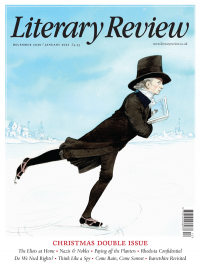Laura Freeman
Travels in My Kitchen
‘The Tipp-Ex Trip’ is how I’ve come to think of it. The trip that never was. It was meant to be ‘The Footsteps Trip’. I am writing a biography of H S Ede, commonly known as Jim, who created Kettle’s Yard in Cambridge. I had a plan: 2019 – libraries and archives; 2020 – in Jim’s footsteps; 2021 – knuckle down and knock it out. I had factored in contingency weeks and emergency writing wiggle room. But even in my reasonable worst-case scenario, there was no back-up plan for a global pandemic.
Jim lived a long life, almost the length of the 20th century. He was born in Penarth, not far from Cardiff, in 1895 and died in Edinburgh in 1990. In the middle were two wandering decades. In the late 1930s, wanting to escape the London gallery world, he left the Tate, where he had been an unhappy curator, and built a house above Tangier. He lectured on art in America during the Second World War and bought a farmhouse in France in the 1950s, before discovering the three slum cottages that became Kettle’s Yard in 1957. He filled Kettle’s Yard with works by Ben and Winifred Nicholson, Christopher Wood, Alfred Wallis, David Jones and Henri Gaudier-Brzeska, and with stones, pebbles, shells, feathers and other ‘stray objects’. He offered tours and tea to undergraduates, and on his retirement in 1973, he bequeathed the house, pebbles and all, to the University of Cambridge. Today it is just as he left it.
The collection, much of it amassed in the 1920s and 1930s, captures a particular moment of British 20th-century modernism. It offers a portrait not only of a collector, a curious mix of minimalist and magpie, but of a place, a time, a turn of mind. Jim was not a rich

Sign Up to our newsletter
Receive free articles, highlights from the archive, news, details of prizes, and much more.@Lit_Review
Follow Literary Review on Twitter
Twitter Feed
How to ruin a film - a short guide by @TWHodgkinson:
Thomas W Hodgkinson - There Was No Sorcerer
Thomas W Hodgkinson: There Was No Sorcerer - Box Office Poison: Hollywood’s Story in a Century of Flops by Tim Robey
literaryreview.co.uk
How to ruin a film - a short guide by @TWHodgkinson:
Thomas W Hodgkinson - There Was No Sorcerer
Thomas W Hodgkinson: There Was No Sorcerer - Box Office Poison: Hollywood’s Story in a Century of Flops by Tim Robey
literaryreview.co.uk
Give the gift that lasts all year with a subscription to Literary Review. Save up to 35% on the cover price when you visit us at https://literaryreview.co.uk/subscribe and enter the code 'XMAS24'